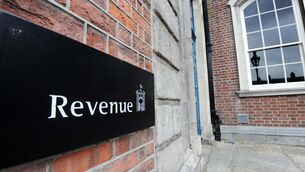Commercial construction inflation steady at 1.5% as SCSI urges faster infrastructure investment

Inflation within the commercial construction sector continued to hold steady at 1.5% during the first six months of the year.
The Society of Chartered Surveyors Ireland (SCSI) has encouraged the Government to accelerate infrastructure investment following a report which showed commercial construction cost inflation is holding steady.
The SCSI’s Tender Price Index, which is published every six months, tracks changes in commercial tender prices in the delivery of commercial construction projects such as office, retail and industrial units.
It showed during the first six months of this year, the median rate of commercial construction inflation increased nationally by 1.5%, the same rate as the three preceding six-month periods.
The report noted some regional variation in the inflation rate over the first six months of the year, with Munster and Connacht / Ulster experiencing the highest levels at 2% while Dublin experienced 1% inflation in the sector. The rest of Leinster, excluding Dublin, had an inflation rate of 0.5%.
In the 12 months to the end of June, inflation in the sector is running at 3%.
According to the SCSI, labour shortages and constraints, and the increasing cost of that labour, were among the major challenges facing the sector.
“While overall inflationary pressures have moderated, feedback from quantity surveyors indicates that labour-related costs continue to influence tender pricing across certain projects,” the report said.
SCSI vice-president Tomás Kelly said the reduction in the sector’s inflation rate over the last few years had been due mainly to reduced supply chain disruption and price volatility for construction materials.
“However, while overall inflationary pressures have moderated, ongoing geopolitical uncertainty, over conflicts and the potential introduction of reciprocal tariffs between the US and the EU have the capacity to cause fresh supply chain disruption,” he said.
“While we believe tender prices will continue to edge higher in the second half of 2025, given global uncertainty, it is very difficult to predict if the moderate rates we have seen over the past two to two and a half years will continue. While it’s true that fears of a tariff war may be receding at the moment, that may change.”
Last month, the Government updated its National Development Plan, saying it plans to spend €275bn on infrastructure up to 2035. A total of €102bn will be invested in infrastructure projects between 2026 and 2030.
Mr Kelly said the current period of tender price stability provides a “great opportunity for the Government to push forward with the much-needed infrastructure investment across a range of sectors”.
He said “urgent investment” was needed in areas such as the water supply network, wastewater treatment, and the electricity grid.
“Critical investment is also required across the transportation, residential and healthcare sectors,” he said.
“We would also urge the Government to publish the sectoral investment plans in order to provide specific details of the projects and pipeline up to 2030.”
The report is based on new-build projects with values in excess of €1m. It is based on median price increases across differing project types and locations.
Research for this report is based on responses from chartered quantity surveyors from all around the country, working on commercial projects. It was conducted in July and August.











